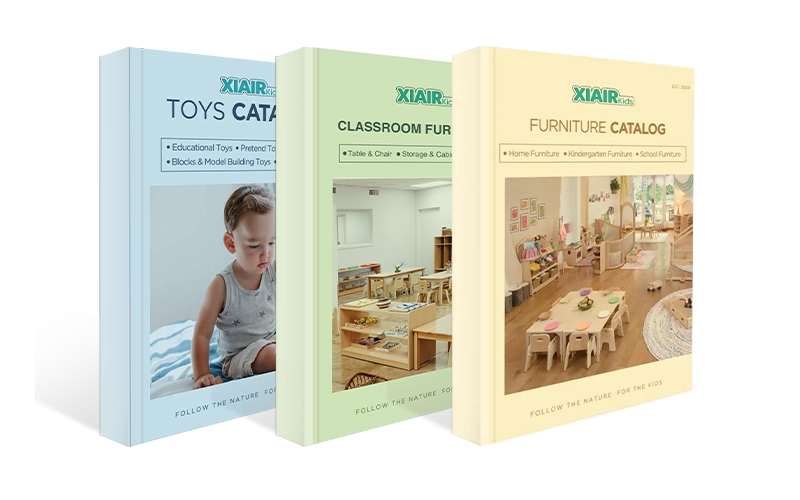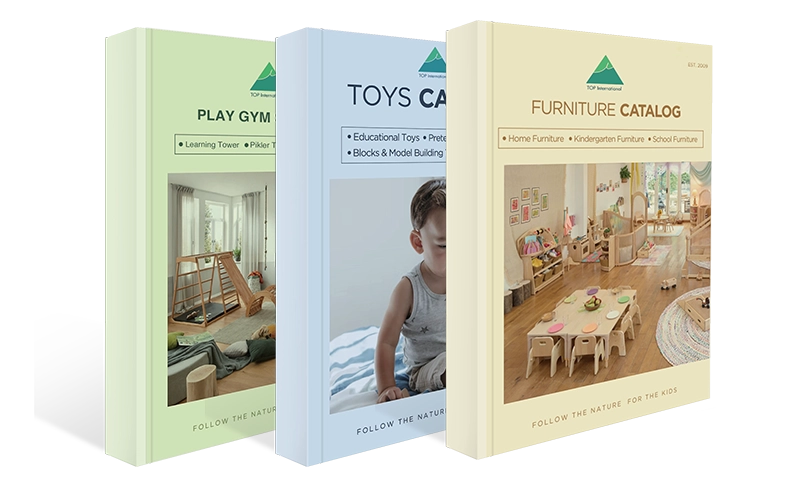お子様の 早期識字能力の発達 幼い頃から、子どもたちに基本的な読み書きのスキルを身につけさせるにはどうしたらよいかお悩みですか?
Many parents and educators feel overwhelmed by the complexities of emergent literacy and how to nurture a child’s development in this crucial stage properly. Without a strong foundation in early literacy skills, children may struggle to catch up in later years, potentially affecting their academic performance and confidence in learning.
朗報です。早期識字能力の発達過程を理解し、シンプルで実践的な活動に取り組むことで、お子様が読解力の成功へと導く重要なスキルを身につけられるようになります。この記事では、早期識字能力の発達の重要性を探り、お子様の早期識字能力の発達を支援するための実践的な戦略と活動をご紹介します。

1. What is Emergent Literacy?
初期リテラシーとは、子どもたちが書き言葉や話し言葉に触れる中で身につけるスキル、知識、そして態度を指します。こうした初期のリテラシー体験は、正式な読み書きの指導が始まる前に、多くの場合、就学前教育の段階で行われます。就学前教育における初期リテラシーとは、アルファベットを学ぶだけでなく、様々なスキルを身につけることです。
マリー・クレイ創発リテラシー理論

マリー・クレイ, a renowned researcher in early childhood education, developed the emergent literacy theory. This theory is premised on the idea that children bring their unique experiences and knowledge to learning to read and write. Clay emphasized that children’s early literacy behaviors are influenced by their interactions with the world around them, including caregivers, peers, and the environment.
クレイの理論は、子どもたちが読み書き能力の発達に積極的に参加することの重要性を強調しています。彼女の研究によると、子どもたちは、活字が豊富な環境に触れ、本に触れる機会を持ち、読み書き行動を手本とする保護者や教育者から指導を受けることで、最もよく学びます。
創発的リテラシーの定義
初期リテラシーとは、幼児が自立して読み書きできるようになる前に、書き言葉と話し言葉の理解を育むプロセスです。この初期段階のリテラシー発達には、文字、音、単語の認識といった印刷物の概念の理解や、印刷物が意味を持つことへの理解などが含まれます。
創発的リテラシーの本質は、将来のリテラシースキルの基盤を築くことです。その基盤は、子どもたちが周囲の環境を探索し、言葉を聞き、読書、会話、遊びを通して大人と交流することから始まります。こうした初期の経験を通して、子どもたちは言語の構造と使い方を理解し、それがリテラシースキルの発達への道へと繋がります。
彼女の理論は幼児教育に永続的な影響を与え、識字能力発達の初期段階における読み書きの指導に対する教育者のアプローチに影響を与えています。
2. The Importance of Emergent Literacy
初期のリテラシーは、その後の読み書き能力の発達に不可欠です。このセクションでは、初期のリテラシーと言語発達の関係に焦点を当て、音韻認識、印刷文字認識、語彙習得、読書への愛着の育成など、幼児期の学習に寄与する主要な領域に焦点を当てます。

初期の識字能力と言語発達
早期の読み書き能力は言語発達と密接に結びついており、発達段階の読み書き能力と言語発達は相互に依存しています。子どもたちが話し言葉や書き言葉に触れる機会が多ければ多いほど、優れた読み書き能力を身につける可能性が高まります。言語発達には、文法、文構造、語彙の理解が含まれます。この基礎は、子どもたちが読み書きを成功させる上で非常に重要です。
Children acquire the language skills necessary to make sense of written texts later on through activities such as reading aloud, storytelling, and engaging in conversations. Listening to stories helps children understand narrative structures and expands their vocabulary, which is essential for developing literacy.

Receive a free catalog and custom layout to help you design your ideal classroom easily.
幼児期の学習促進
認知発達と学業成績の向上には、初期の読み書き能力の育成が不可欠です。幼児期の子どもたちは言語と読み書きの指導に特に敏感なので、この時期に読み書き能力を育むことは長期的な効果をもたらす可能性があります。絵本を読んでもらったり、言葉遊びをしたり、物語について話し合ったりといった早期の読み書き体験は、子どもたちの読書への愛着を育みます。
さらに、未就学児向けの初歩的な読み書き活動は、学ぶことへの愛情を育むのに役立ちます。これらの魅力的な活動は、批判的思考力、言語理解力、そして社会性といった、学校生活や人生での成功に不可欠なスキルの発達をサポートします。
言語発達
言語発達は、未就学児の早期識字活動の主なメリットの一つです。この幼少期に、子どもたちは語彙を増やし、言語構造の理解を深めます。韻を踏む、歌う、物語を語るといった活動は、子どもたちの言語理解とコミュニケーション能力を高めます。
保護者や教育者は、物語を読んだり他の人と交流したりするなど、言語を豊かにする活動に参加する機会を提供することで、子供の言語発達に大きく貢献できます。

音韻認識
Phonological awareness is another cornerstone of emergent literacy skills in early childhood education. Phonological awareness involves recognizing and manipulating the sounds of language. Children develop this skill through games, songs, and rhyming activities that help them identify syllables, rhymes, and individual sounds.
このスキルは、音と文字を結びつけることで単語を解読するのに役立つため、読む上で非常に重要です。例えば、「cat」という単語の最初の音(「c」の音)を区別できる子供は、将来新しい単語を読み、理解する能力がより優れています。
印刷物の認識
印刷物への意識とは、印刷物には意味があり、考えを伝えるために使われていることを子どもが理解することを指します。これには、単語は左から右に読むこと、そして文字は話し言葉と対応していることを認識する能力が含まれます。子どもたちは、初歩的な読み書き活動を通して、本には表紙と裏表紙があること、ページは特定の方向にめくられること、そしてページ上の言葉が物語を構成していることを学びます。
子どもたちに本を見つめ、言葉を指さし、絵について話すように促すことは、この認識を育むのに役立ちます。子どもたちが本と関わる機会が増えるほど、印刷物への認識が深まり、より正式な読み方指導への基盤が築かれます。

語彙習得
豊富な語彙力の構築は、初歩的な読み書き能力の育成において重要な要素です。子どもたちの語彙力は、大人との交流、物語への触れ合い、そして会話への参加を通して成長します。様々な文脈で新しい単語を聞き、使うことで、子どもたちは単語の意味を理解し、会話や書き言葉で効果的に使う方法を学ぶことができます。
豊富な語彙力を身につけることは、お子様の文章理解力と思考力の向上につながります。語彙力の習得は、読み書きや話し言葉の理解、そして学校での良好な成績にとって不可欠です。
読書への愛
Finally, one of the most critical aspects of emergent literacy is fostering a love for reading. Children who develop a positive attitude towards books and reading are likelier to engage in independent reading later in life. Reading aloud to children, exposing them to various books, and encouraging them to “read” independently are all strategies that help build this love.

3. How Children Develop Literacy?
Literacy development is a gradual, multi-stage process that begins at birth and continues into adulthood. It involves acquiring various skills, from recognizing sounds and symbols to understanding complex texts and expressing ideas through writing. Each phase of literacy development builds upon the previous one, and understanding these stages helps parents and educators provide age-appropriate support. While children progress at different rates, there are five generally recognized stages in literacy development, each marked by distinct learning milestones.
Emergent Literacy (0–5 years of age)
Children begin to understand the basics of communication and printed language during the emergent literacy stage. This phase starts from birth, as babies and toddlers are immersed in the sounds of spoken language. Through exposure to books, conversations, songs, and storytelling, children begin to grasp that language has structure and meaning. By age five, many can recognize letters, understand that text conveys information, and show interest in “reading” familiar books by memory.

Alphabetic Fluency (5–8 years of age)
As children enter school, they transition into the alphabetic fluency stage. Here, they decode words using letter-sound relationships and recognize common sight words. Children learn how letters form sounds and how these sounds form words—a critical step toward fluent reading. They also begin to write using simple sentences and invented spelling based on how words sound.

Words and Patterns (7–9 years of age)
In the words and patterns stage, children recognize patterns within words, such as prefixes, suffixes, and word families. This stage overlaps with alphabetic fluency but introduces more complex spelling and vocabulary rules. Children develop a deeper understanding of language conventions, punctuation, and grammar. They move from sounding out every word to recognizing word chunks, which increases reading speed and accuracy.

Intermediate Reading (9–15 years of age)
The intermediate reading stage shifts from “learning to read” to “reading to learn.” Children are now able to tackle more complex texts across a variety of subjects. They read for enjoyment and to gather information, analyze ideas, and think critically. At this stage, vocabulary grows rapidly as children encounter more technical and content-specific words, especially in science, history, and literature.

Advanced Reading (15 to adult)
In the advanced reading stage, literacy is no longer a skill being learned—it is a tool used for higher-level thinking, communication, and exploration. Teenagers and adults in this phase can interpret abstract ideas, analyze arguments, and read across genres and disciplines. They can form well-supported opinions, conduct independent research, and communicate ideas through sophisticated writing.

Decoding: Decoding is translating written symbols into sounds and words. It relies on understanding letter-sound relationships and is essential for early reading success. Mastery of phonics supports accurate and fluent reading.
Fluency: Fluency is reading with speed, accuracy, and proper expression. Fluent readers can focus on comprehension rather than decoding each word. Repeated reading and oral practice help build fluency.
Vocabulary: A strong vocabulary enables children to understand what they read and express themselves clearly. Vocabulary grows through conversation, reading, and exposure to diverse texts. It’s a key predictor of reading comprehension.
Sentence Structure and Cohesion: Understanding how sentences are formed and connected improves reading comprehension and writing clarity. Teaching grammar, conjunctions, and transitions helps students express ideas logically and read with better understanding.
Experience, Reasoning, and Background Knowledge: Prior knowledge and life experiences shape how children understand texts. The more they know, the easier it is to make inferences, draw conclusions, and connect new ideas to existing ones.
Working Memory and Attention: Working memory allows children to hold and process information while reading, while attention helps them stay focused. Both are critical for understanding longer texts, following plots, and completing reading tasks effectively.
4. Suitable Emergent Literacy Activities for Preschoolers
Developing emergent literacy skills during preschool is essential to building a strong foundation for future reading and writing. Young children learn best through play, repetition, and interaction, making choosing engaging, developmentally appropriate activities rooted in language-rich experiences essential.
音韻認識ゲーム
Games like rhyming, clapping syllables, or “I Spy” with sounds enhance children’s ability to hear and manipulate language. These skills are essential for decoding words later on. Keep it playful and consistent for maximum effect. Try tongue twisters or simple chants to reinforce beginning sounds. Sort objects or pictures by their starting sounds for a hands-on experience. Encourage children to create their own rhymes or silly sound combinations.
インタラクティブなライティングアクティビティ
Let children draw, scribble, or “write” their own stories. Offer crayons, markers, and writing prompts. Encourage them to talk about what they’re drawing or “reading” back their stories. Introduce name-writing early to personalize their writing journey. Use story starters to inspire creativity and encourage sentence building. Allow invented spelling to be a natural part of early writing development.
アルファベット認識アクティビティ
Use songs, flashcards, and magnetic letters to teach letter names and sounds. Focus on the letters in the child’s name first. Make learning multisensory with hands-on materials and repetition to help retention.
Incorporate movement by having children form letters with their bodies or in sand. Play alphabet matching or memory games to reinforce recognition. Create letter-of-the-week activities to focus on one sound at a time.

印刷物の認識調査
Label everyday items around the house or classroom. Point out signs, menus, and packaging to show how print is used. Let children help write grocery lists or notes. Use daily routines—like setting the table or cleaning up—as opportunities to spot and use print. Provide books with clear print and point to words as you read aloud. Encourage children to notice environmental print, like store logos or street signs.
Take Your Time
When reading, pause to discuss the pictures, repeat new words, and allow your child to ask questions. Rather than rushing through a story, encourage your child to predict what will happen next or retell it in their own words. These actions develop comprehension, sequencing skills, and vocabulary. The same goes for routine tasks—describe what you are doing, name objects, and allow children to respond. The more time you give for these interactions, the deeper their engagement and learning.
Build on Their Words
Children often say the most imaginative things. Use those moments as opportunities to build their language and literacy skills. When your child says a word or a sentence, expand on it. For example, if a child says, “dog bark,” you might respond, “Yes, the big brown dog is barking loudly because he hears a noise.” This affirms the child’s words and introduces them to new vocabulary, sentence structure, and ideas.
Let Your Child “Write”
Ask them to “read” their writing to you, even if it’s just a string of marks or drawings. This builds confidence and reinforces the concept that writing is a way to express thoughts. As children gain more control over their fine motor skills, guide them gently towards forming shapes and letters, starting with the letters in their names. You can also use tools like sand trays, finger paints, or salt writing boards to make writing more sensory and fun. Activities that develop fine motor coordination—like playing with playdough, stringing beads, or using tongs—also support the physical skills needed for writing.
Play Word Games
Word play is a fun and effective way to build phonological awareness, which is the ability to recognize and manipulate the sounds in words—a critical skill for learning to read. Depending on your child’s age and development, you can adjust the complexity of the games.
Babies
Word games focus on sound exposure and listening for babies. Sing nursery rhymes, talk about what you’re doing, and play peekaboo while emphasizing specific words. Babies are naturally drawn to rhythm and repetition, which supports language learning. Name body parts, toys, and actions throughout the day to build their receptive vocabulary.
Toddlers
With toddlers, begin introducing rhyming games and songs. Use fingerplays like “Itsy Bitsy Spider” or “Wheels on the Bus” that incorporate movements and rhymes. Ask them to find objects that rhyme or start with a specific sound. Repeat their responses and add more detail to keep them engaged and learning.
Preschoolers
Preschoolers can begin playing more structured word games. Try “I Spy” with sounds like “I spy something that starts with the ‘b’ sound.” Introduce alliteration and let them devise silly phrases like “Sammy snake sips soup.” You can also play matching games with picture cards, where they match images based on beginning sounds or rhyming words.
These games build awareness of how language sounds and functions, providing a strong foundation for decoding words when they begin to read.

5. How to Promote Emergent Literacy in the Classroom?
Promoting emergent literacy in the classroom is essential to creating a strong foundation for children’s future reading and writing abilities. As educators, creating an environment that supports the development of language, phonological awareness, and print concepts is crucial. Below, we’ll explore several classroom strategies for promoting emergent literacy.
ルーチンを確立する
教室でリテラシーの発達を促す最も効果的な方法の一つは、一貫したルーティンを確立することです。ルーティンは子どもたちに安心感を与え、一日の流れを理解するのに役立ち、ひいては学習を促進します。また、予測可能なルーティンは、子どもたちが日々の活動の中でリテラシースキルを練習することを可能にします。
For instance, you can create a morning routine where children have time to engage with books. Start the day by reading aloud a simple, engaging story. During circle time, you could introduce new vocabulary words, ask children to repeat after you, and practice letter recognition by pointing to the letters in the room. As children become familiar with these routines, they will naturally pick up language skills, especially when they can predict what comes next.
Another key part of establishing routines is to incorporate repetitive language. During daily activities, songs, rhymes, and familiar phrases can significantly help reinforce phonological awareness, a key component of emergent literacy. When children hear rhymes or repeat words in songs, they begin recognizing patterns in language, which strengthens their early reading skills.
頻繁に読む
子どもに定期的に読み聞かせをすることは、読み聞かせを通して新しい読み聞かせ能力を育む最も効果的な方法の一つです。頻繁な読み聞かせを通して、子どもたちは新しい語彙、文構造、そして短い絵本から長い物語まで、物語の形式に触れることができます。
教室では、毎日の読書習慣を確立しましょう。子どもたちに読み聞かせの時間を設け、テーマ、ジャンル、難易度など、様々なレベルの本を用意しましょう。読み聞かせの際には、登場人物の名前、出来事の順序、そして左から右への読み方といった基本的な印刷物の概念など、重要な概念を強調しましょう。
さらに、読書を共同体験にすることも重要です。子どもたちに物語について質問したり、次に何が起こるかを予想させたり、絵を「読む」ように促したりして、文章に積極的に関わるよう促しましょう。こうしたやりとりは、子どもたちの理解力と活字への意識を高め、読書への興味を刺激します。
口頭言語スキルの練習
教室で口頭言語能力の発達に重点を置くことは、初歩的な読み書き能力の育成の礎となります。自分の考えを明確に表現でき、豊富な語彙力を持つ子どもは、書き言葉を理解する準備がより整います。
口頭言語能力を育むには、子どもたちに構造化された会話と非構造化された会話の両方に参加する機会を与えましょう。遊びの時間には、子どもたちが自分の考えや感情、観察を表現できるような会話を促しましょう。「この後どうなると思いますか?」「このお話を聞いてどう感じましたか?」といった自由回答形式の質問をすることで、子どもたちは表現力豊かな言語を発達させ、文章構成の練習をすることができます。
You can also engage children in oral storytelling activities. Ask them to create stories based on images or experiences. This helps build language skills and encourages creativity and narrative thinking, which are foundational for later reading comprehension.

会話を促す
子ども同士の会話を促すことは、識字能力の発達を促す上で不可欠です。仲間との交流は、子どもたちに社会的な状況の中で言語スキルを練習する機会を与えます。会話は、子どもたちがコミュニケーションの重要性を理解し、順番を交代するスキルを発達させ、注意深く聞く方法を学ぶのに役立ちます。
教室では、子どもたちが経験や考えを共有する機会を作りましょう。グループディスカッション、ペアシェア活動、共同プロジェクトなどを通して、子どもたちは語彙力を高め、言語を使う自信を育むことができます。
これを促進するには、すべての生徒が安心して話せる、安全でインクルーシブな環境を作りましょう。子どもたちに質問をしたり、既存の知識と関連付けたり、友達の話に耳を傾けたりすることを促しましょう。子どもたちが会話をすればするほど、言語に対する流暢さと快適さが増していきます。
執筆前のアクティビティを取り入れる
子どもたちが書き方を学ぶ前に、書き言葉を理解するために必要な細かい運動能力と認知能力を身につける必要があります。書き言葉を学ぶための準備活動は、子どもたちが書くことに伴う身体的および精神的な負担に備えるのに役立つため、初期の読み書き能力の発達において重要な部分です。
まずは、形をなぞったり、線を引いたり、筆記具の持ち方を練習したりといった、手と目の協調性や細かい運動能力を育む活動を取り入れてみましょう。絵を描いたり、色を塗ったり、切り取ったりといった活動を通して、楽しくインタラクティブにこれらの能力を育みましょう。
Additionally, pre-writing activities should include exercises that help children understand how written language works. Provide opportunities for them to “write” their own stories through scribbling or drawing, which allows them to know the purpose of writing. Labeling objects in the classroom and encouraging children to create their own labels or captions will reinforce their understanding of print concepts.

6. Early Parental Intervention is Critical
Promoting emergent literacy at home is one of the most potent ways parents and caregivers can support a child’s early development. Children absorb language and literacy skills long before formal education begins through everyday interactions, routines, and play. With just a few intentional practices, families can create an environment fostering the foundational skills needed for success in reading and writing.
Start by reading aloud daily. This is one of the most effective and enjoyable ways to build a child’s vocabulary, comprehension, and print awareness. Choose age-appropriate books with colorful illustrations, rhythmic text, and engaging stories. Make it interactive—ask your child questions about the story, encourage them to describe the pictures, and let them turn the pages.
Create a print-rich environment in your home. Label everyday objects such as furniture, toys, or kitchen items to help children recognize that print carries meaning. Keep various books within easy reach, and dedicate a cozy reading nook that invites your child to explore books independently.
Talk with your child often. Regular conversation builds language skills and introduces new words in context. Narrate your daily routines, describe your actions, and encourage your child to ask and answer questions. Listening and speaking are essential building blocks for later reading success.
Introduce pre-writing activities to develop fine motor skills and early writing habits. Offer crayons, markers, and paper for your child to draw and “write.” Praise their efforts, whether they’re scribbling or attempting to write letters. Please encourage them to write names, label drawings, or make pretend lists.
Sing songs, recite rhymes, and play word games. These activities build phonological awareness, helping your child hear and manipulate the sounds in words. Simple games like clapping syllables or finding rhyming words make learning fun and effective.
Finally, model a love for reading and writing. Let your child see you read books, write lists, or jot down notes. Your enthusiasm will influence their attitude toward literacy. When children know that reading and writing are valued in daily life, they’re more likely to engage with them themselves.
By weaving these simple yet powerful practices into daily routines, you can actively support your child’s emergent literacy development and lay the groundwork for lifelong learning.

7. Difference Between Early Literacy and Emergent Literacy
Understanding the difference between early and emergent literacy is essential for educators, parents, and caregivers. Both are integral stages of a child’s literacy development, but focus on different skills and concepts. Below is a comparison of the two.
| 側面 | 早期識字 | 創発的リテラシー |
|---|---|---|
| 意味 | 早期識字とは、子どもたちが正式な読み書きの準備として身につけるスキルと知識を指します。アルファベットの知識や音韻認識といったスキルに重点が置かれます。 | 初歩的な読み書き能力とは、子どもが自立して読み書きできるようになる前の段階です。活字体の認識や語彙の発達など、読み書きに役立つ基礎スキルが含まれます。 |
| 集中 | 早期識字教育は、読み書きの学習に重点を置きます。単語の解読や文章の書き方といった具体的なスキルが含まれます。 | 初等リテラシーは、話し言葉と書き言葉の理解、文字の認識、語彙の構築など、読み書きの基礎に重点を置いています。 |
| 含まれるスキル | 文字認識、音韻認識、印刷概念の理解などのスキル。 | 言語の音を認識する(音韻認識)、印刷物を理解する、初期の言語パターンを形成するなどのスキル。 |
| 年齢範囲 | 通常、正式な教育を始める4~6歳の子供に発症します。 | 誕生から始まり、就学前まで続き、正式な読み書き能力の発達の土台を築きます。 |
| 学習アプローチ | 音声学の指導や手書きの練習など、構造化された指導と正式な学習が含まれます。 | 学習はより非公式なものとなり、環境との交流、言語遊び、本の探究に重点が置かれます。 |
これらの違いを理解することで、適切な時期に子供の識字能力の成長に適した発達戦略をターゲットにすることができます。

Receive a free catalog and custom layout to help you design your ideal classroom easily.
Highly recommended books on emergent literacy
Certainly! Here are some highly recommended books on emergent literacy suitable for parents, educators, and caregivers aiming to support early reading and writing development in young children:
Professional Resources
- Emergent Literacy and Language Development: Promoting Learning in Early Childhood by Paula M. Rhyner
This book offers practical strategies and research-based insights for fostering language and literacy skills in early childhood settings. - Engaging Children with Print: Building Early Literacy Skills through Quality Read-Alouds by Laura M. Justice and Amy Sofka
A guide that emphasizes the importance of interactive read-alouds in developing children’s print knowledge and vocabulary. - Emergent Literacy: Writing and Reading, edited by William H. Teale and Elizabeth Sulzby
A comprehensive collection of research articles explores reading and writing development in young children. - Emergent Literacy: Lessons for Success by Sonia Q. Cabell
This resource provides evidence-based practices and lesson plans to support emergent literacy in early learners. - Assessment in Emergent Literacy by Khara L. Pence Turnbull and Laura M. Justice
A detailed guide on assessing young children’s literacy development to inform instruction and intervention.
Children’s Books for Emergent Readers
- Chicka Chicka Boom Boom by Bill Martin Jr. and John Archambault
An engaging alphabet rhyme book that introduces letters in a fun and memorable way. - Brown Bear, Brown Bear, What Do You See? by Bill Martin Jr. and Eric Carle
A repetitive and rhythmic book that helps children anticipate and recognize patterns. - Good Night, Gorilla by Peggy Rathmann
A nearly wordless book that encourages storytelling and vocabulary development through illustrations. - The Biscuit Series by Alyssa Satin Capucilli
Repetitive and straightforward text is ideal for building confidence in early readers. - Bob Books: Set 1 – Beginning Readers by Bobby Lynn Maslen
A series designed to introduce young readers to phonics and basic sentence structures.
よくある質問
1. 初期識字能力と初期識字能力の違いは何ですか?
早期識字能力は、フォニックスや文字認識といった読み書きのスキルに重点を置いています。一方、初期識字能力は、正式な読み書きの前に身につける音韻認識や印刷物の認識といった基礎的なスキルを伴います。
2. 識字能力の発達にとって親の関与が重要なのはなぜですか?
親の関与は、家庭に読み書き能力に富んだ環境を提供し、子どもたちの言語能力、語彙、読書への愛着を育むのに役立ち、これらは将来の読み書き能力の発達に不可欠なため、非常に重要です。
3. 教室で新しいリテラシーを促進するための戦略にはどのようなものがありますか?
効果的な戦略としては、定期的に音読すること、会話を奨励すること、ルーチンを確立すること、言語と運動能力の発達をサポートするために描画やトレースなどの書き取り前のアクティビティを取り入れることなどが挙げられます。
4. 初期の識字能力はいつ始まるのでしょうか?
初期の読み書き能力は、子どもたちが誕生した瞬間から、言語、音、そして相互作用に触れることから始まります。そして、文字の認識や印刷物の概念の理解といった基礎的なスキルを身につける就学前期まで続きます。
5. 識字能力の発達を促す最善の方法は何ですか?
読み書き能力の発達を促す最善の方法は、定期的に読み聞かせをし、子供たちと会話をし、本やラベル、インタラクティブな言語活動など、印刷物が豊富な環境を提供することです。
6. 新たな識字能力をどのようにサポートするか?
毎日の読書習慣を確立し、ゲームを通じて音韻認識を促進し、描画と書き込みを奨励し、インタラクティブなストーリーテリングを通じて本への愛を育むことで、初期の識字能力をサポートします。
結論
幼児期の発達において、初期の識字能力は極めて重要であり、将来の読み書き能力の基盤となります。これは出生時から始まり、就学前まで継続し、音韻認識、印刷文字認識、語彙といった重要なスキルを子どもたちが身につけていきます。親や教育者は、生活習慣を確立し、定期的に読み聞かせを行い、会話を交わし、書き取りの準備となる活動を提供することで、初期の識字能力を育むことができます。家庭や教室における識字能力に富んだ環境は、子どもたちの本への愛着を育み、言語発達を促します。初期の識字能力と初期の識字能力の違いを理解することで、子どもたちが幼い頃から強く永続的な識字能力を身に付けられるよう、的を絞った戦略を立てることができます。私たちは、初期の識字能力をサポートすることで、子どもたちが学業で成功し、生涯学習を積むための準備を支援しています。







